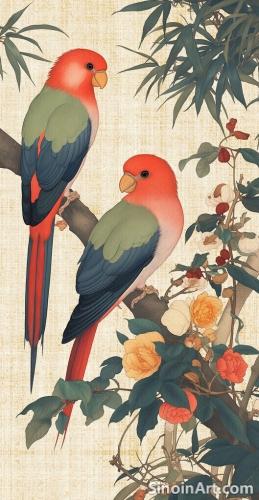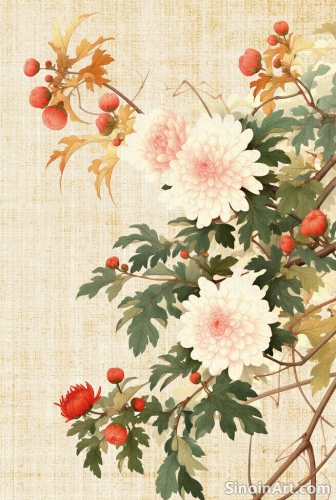Gongbi Painting and the Art of Storytelling
|
Gongbi painting has long been used as a medium for storytelling, bringing to life narratives from history, mythology, literature, and everyday life. The meticulous detail, complex compositions, and symbolic language used in Gongbi paintings allow artists to create visual narratives that are both engaging and informative, captivating the viewer and guiding them through the story.  Gongbi paintings often tell stories through the use of a series of interconnected scenes, each carefully rendered to capture a particular moment in the narrative. The use of visual sequencing helps the viewer to understand the story in a structured way. The artist will often guide the viewer's eye across the composition through the placement of figures and objects.  The characters in Gongbi storytelling paintings are often depicted with great detail, their clothing, accessories, and expressions serving to communicate their roles and personalities. The artist's portrayal of character is critical to the interpretation of the story. Every detail contributes to the narrative being told in the painting.  The use of symbolism also plays an important role in conveying the meaning and message of the story. Flowers, birds, animals, and other elements are often imbued with symbolic significance, adding layers of interpretation to the visual narrative. The use of symbols creates additional layers of meaning that enrich the story being told. Gongbi artists often use elaborate architectural settings and detailed landscapes to create a sense of place and context for their stories. The settings help to enhance the overall mood and atmosphere of the narrative, immersing the viewer in the world of the story. The environment plays a critical role in setting the scene and atmosphere for the story. Ultimately, Gongbi painting serves as a powerful visual medium for storytelling. It allows artists to bring to life complex narratives, conveying not only the plot, but also the underlying themes, emotions, and cultural values. The combination of art and story allows the viewer to experience the work on both visual and intellectual levels. |
Tag : Gongbi storytelling, narrative art, Chinese art stories, visual storytelling, art and literature
Related information
- Gongbi and the Representation of Movement: Capturing Dynamism
- Gongbi Painting and its Place in Contemporary Art Discourse
- Gongbi Painting and the Depiction of Auspicious Symbols
- Gongbi Painting and the Art of Observation
- Gongbi Painting and its Relationship to Song Dynasty Aesthetics
This article explores how Gongbi painting captures movement and dynamism, highlighting the use of line, flowing fabrics, dynamic composition, and the depiction of flying birds and swimming fish, and how these techniques suggest energy and flow within the artwork.
This article explores the place of Gongbi painting in contemporary art discourse, highlighting how artists are using the art form to address modern concerns, engage with tradition, and contribute to a wider global artistic conversation.
This article explores the use of auspicious symbols in Gongbi painting, highlighting the meaning and cultural significance of these motifs, and how their depiction in these detailed works expresses wishes for good fortune, prosperity, and happiness.
Explores the significance of observation in Gongbi painting, highlighting its role in capturing detailed forms and understanding the subject's essence.
This article explores the relationship between Gongbi painting and the aesthetic principles of the Song Dynasty, highlighting its influence on the art form's emphasis on realism, detail, subject matter, symbolism, and overall artistic vision.